#aboriginal title
Explore tagged Tumblr posts
Text
How did the National Day of Action become Canada's "Aboriginal Day"?
The Assembly of First Nations called for a National Day of Action in 2007. The call was answered in over 100 locations across Canada, where people stopped traffic, trains, and TV news on June 29th. AFN Chief Phil Fontaine made the call for immediate action to address the situation of Indigenous Peoples in Canada. At the end of the first National Day of Action, June 29, the AFN press…
3 notes
·
View notes
Text
We want to participate in the industry so that, should we be brought to court again over our right to pursue our culture on our land, we will not be told, as the Yorta Yorta were, that our culture was 'washed away by the tide of history'.⁹
9. Justice Olney's decision in 1998 that the Yorta Yorta native title claim had failed was because the land had been 'settled' by whites and the Yorta Yorta culture had been 'washed away by the tide of history'. Perhaps a new claim won't be so casually dismissed.
"Country: Future Fire, Future Farming" - Bill Gammage and Bruce Pascoe
#book quotes#country#bill gammage#bruce pascoe#nonfiction#food production#industry#indigenous australians#aboriginal australian#court#indigenous culture#indigenous land#yorta yorta#washed away#justice olney#90s#1990s#20th century#native title#dismissal
2 notes
·
View notes
Text
cool. cool.
"Postal service, shipping lanes, school and community services, private property rights, and local government jurisdiction, will all be unaffected by the agreement"
Which means private mining and forestry interests can still ram projects through.
"In a historic “first-of-its-kind” agreement the government of British Colombia has acknowledged the aboriginal ownership of 200 islands off the west coast of Canada.
The owners are the Haida nation, and rather than the Canadian government giving something to a First Nation, the agreement admits that the “Xhaaidlagha Gwaayaai” or the “islands at the end of world,” always belonged to them, a subtle yet powerful difference in the wording of First Nations negotiating.
BC Premier David Eby called the treaty “long overdue” and once signed, will clear the way for half a million hectares (1.3 million acres) of land to be managed by the Haida.
Postal service, shipping lanes, school and community services, private property rights, and local government jurisdiction, will all be unaffected by the agreement, which will essentially outline that the Haida decide what to do with the 200 or so islands and islets.
“We could be facing each other in a courtroom, we could have been fighting each other for years and years, but we chose a different path,” said Minister of Indigenous Relations of BC, Murray Rankin at the signing ceremony, who added that it took creativity and courage to “create a better world for our children.”
Indeed, making the agreement outside the courts of the formal treaty process reflects a vastly different way of negotiating than has been the norm for Canada.
“This agreement won’t only raise all boats here on Haida Gwaii – increase opportunity and prosperity for the Haida people and for the whole community and for the whole province – but it will also be an example and another way for nations – not just in British Columbia, but right across Canada – to have their title recognized,” said Eby.
In other words, by deciding this outside court, Eby and the province of BC hope to set a new standard for how such land title agreements are struck."
-via Good News Network, April 18, 2024
#aboriginal rights and title#since time immemorial#Haida Gwaii#indigenous people#land back#so called canada#BC news#global news#current events
18K notes
·
View notes
Text
so i simply just dont look at youtube thumbnails anymore due to how bad clickbait and obnoxiously over-edited thumbnails have become.
so when i saw this

it took me a solid minute before realizing they didn't mean HUMAN MALES COMMITTING SEX CRIMES
they meant genuine predators that hunt to eat
#i was like 'are they like... saying the outback has a lot of predators? are they calling aboriginal australians savages?'#took me a MOMENT#and it literally says 'crocodile territory' right there. literallyy right above the title
0 notes
Note
How do Canadian schools teach about indigenous Canadian history and culture? -a curious USAmerican
In my experience we learned about colonization at the same time as we learned about the formation of Canada. At first it was "European settlers came and pushed out the indigenous population", then in the higher grades we learned more about the how and the why.
For example, how carts full of men with rifles would ride around shooting Buffalo, then leaving the meat on the ground to rot, because "a dead Buffalo is a dead indian", which was so fanatical it almost wiped out wild Buffalo entirely
Also how Canadian settlers were lured in with beautiful hand-painted advertisements for cheap, beautiful, fertile land that was unpopulated and perfect, if only you'd sail over with your entire family and a pocket full of seeds- only to be met with scared, confused, and angry lawful inhabitants already run out of ten other places, and frigid winters, and rocky, forested, undeveloped dirt.
also, smallpox blankets, where "gifts" of blankets infected with smallpox were intentionally given out
And treaty violations- Either ignoring written agreements entirely, or buying them out at insanely low prices and lying about the value, or trading for farming equipment that they couldn't use because they weren't farmers.
Then in the first world war, where they told indigenous peoples here that they'd be granted Canadian citizenship if they enlisted
To Residential schools, which was straight up stealing kids for slavery, indoctrination, and medical experiments
But we also covered the building of the Canadian Railway in which Chinese immigrants were lowered into ravines with dynamite to blow out paths through the mountain for pennies on the dollar
And the Alberta Sterilization Act, where it was lawful and routine procedure to sterilize women of colour and neurodivergent people without their awareness or consent after giving birth or undergoing unrelated surgeries
But I'm rambling.
We kind of learned Aboriginal history at the same time as everything else? Like. This is when Canada was made, and this is how it was done. Now we'll read a book about someone who lived through it, and we'll write a book report. And now a documentary, and now a paper about the documentary. Onto the next unit.
And starting I think in grade 10 our English track was split between English and Aboriginals English, where you could choose to do the standard curriculum or do the same basic knowledge stuff with a focus on Aboriginal perspectives and literature. (I did that one, we read Three Day's Road and Diary Of A Part-Time Indian, and a few other titles I don't remember.)
There was also a lunch room for the Aboriginal Culture Studies where Aboriginal kids could hang out at lunch time if they wanted, full of art and projects and stuff. They'd play music or videos sometimes, that was cool
And one elective I took (not mandatory cirriculum) was a Kwakiutl course for basic Kwakwakaʼwakw language. Greetings, counting to a hundred, learning the modified alphabet, animals, etc. Still comes in handy sometimes at large gatherings cause they usually start with a land recognition thanking whoever's land we're on, with a few thanks and welcomes in their language.
And like- when I was in the US it was so weird, cause here we have Totem poles and longhouses and murals all over and yall... don't? Like there is a very distinct lack of Aboriginal art in your public spaces, at least in the areas I've been
My ex-stepfather, who was American, brought his son out once, and he was so excited to "see real indians" and was legitimately shocked to learn that there weren't many teepees to be found on the northwest coast, and was even *more* shocked when we told him that you have Aboriginal people back home too, bud. Your Aboriginal people are also named "Mike" snd "Vicky" and work as assistant manager at best buy.
If you'd ask me, I'd say that the primary difference is that USAmerica (from what I've seen, and ALSO in entirely too much of Canada) treats our European and Aboriginal conflicts as history, something that's tragic but over, like the extinction of the mammoths, instead of like. An ongoing thing involving people who are alive and numerous and right fucking here
But at the end of the day, I'm white, and there are plenty of actual Aboriginal people who are speaking out and saying much more meaningful things than I can
So I'm just gonna pass on a quote from my Stepmum, who's Cree, that's stuck with me since she said it:
"You see how they treat Mexicans in America? That's how they treat us here. Indians are the Mexicans of Canada."
#Canadian history#Canadian education#Medical tw#Medical malpractice#Human rights#Genocide tw#Residential school tw#Child abuse tw#Slavery tw#Current events#Canadian Education#Aboriginal history
581 notes
·
View notes
Text
Washitaw Dugdumoundya - go see for yourself
information for the public about the Nation of people who are indigenous to the American continent. Many people are unaware that this Nation of people even exists at all. We are a multicultural, highly spiritual nation of aboriginal, indigenous Americans who were originally called Washitaw Mu’urs (or Ouachita as it was amended by others throughout our history). We accept both lineal and non-lineal citizens into our Nation. We DO NOT discriminate based on race or religion, as this is the heart of God and of our current Empress, Her Highness, Verdiacee “Tiari” Washitaw-Tunica (Turner) Goston El Bey. Her Highness Previous Spiritual Advisor of Spiritual Education and Information of the Ministry, Oukhara Zeshera, states No Longer Advisor), “All of us within our nation are creations of the Divine Creator, and we are all our Brothers and Sisters. We need to learn our past spirituality, so we can build as a nation. Remember, the first principle in Washitaw is LOVE!”
Imperial Royal Court French & Spanish “The Washitaw de Dugdahmoundyah was recorded as The Oldest Indigenous People on Earth in the final list of all attendees.”
In 1993, The Washitaw Indigenous Nation of Mound Builders received its United Nations number: 215/93. To date, the Empress, as one of the living heirs of Henry Turner, has recovered the title to 68,883 acres of land comprising most of the northern part of the ‘said state of Louisiana. The Washitaw never drew boundaries, We are the original inhabitants of all the lands from wherever you find mound sites you find part of the Empire in so called north America
( A-Meri- Ta ). The one letter rule change one letter to hide the truth they change the letter ” T ” into “C” from Meri-Ta, to A-meri-ca.
The area from Alleghenies to the Rocky Mountains, from Canada down to the Gulphe of Mexico, including East and west Floridaes: and the Pecos River, encompasses the domain of the Empire Washitaw de Dugdahmoundyah. A land mass over 30 million acres. This is one of the regions that the United States claim as part of the Louisiana Purchase.It’s the same region Abraham Lincoln coined as, The Egypt of the West.
The Ancient and Medieval American Mississippian culture 500-1500 AD
Going down a deep dive of the Mississippian mound culture of precolumbian United States.
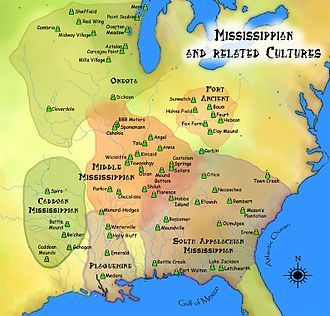
I knew some stuff about the topic, pretty basic and precursory information, but now I think I'm gonna do some more in depth research. It's just fascinating to learn how throughout the Mississippi river region and deep south there were large cities that rivaled medieval cities in Europe with populations in the tens of thousands. Cahokia Illinois for example.
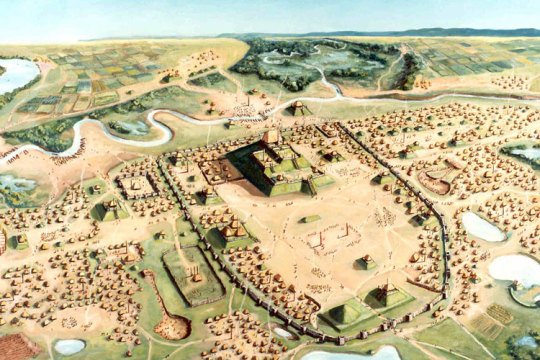
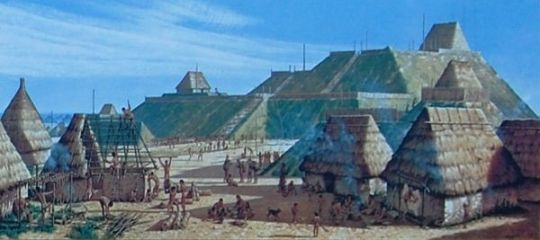
And they made all kinds of really cool artifacts
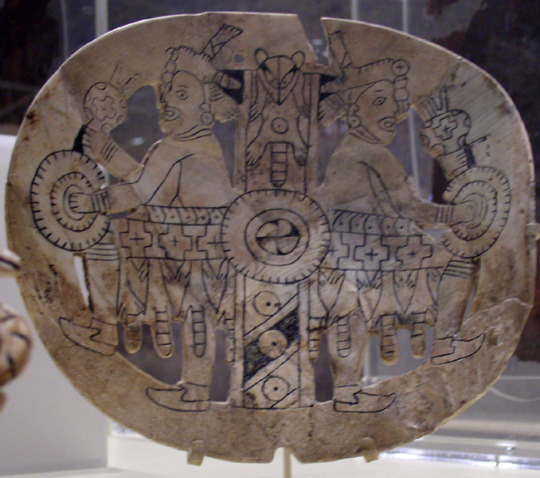
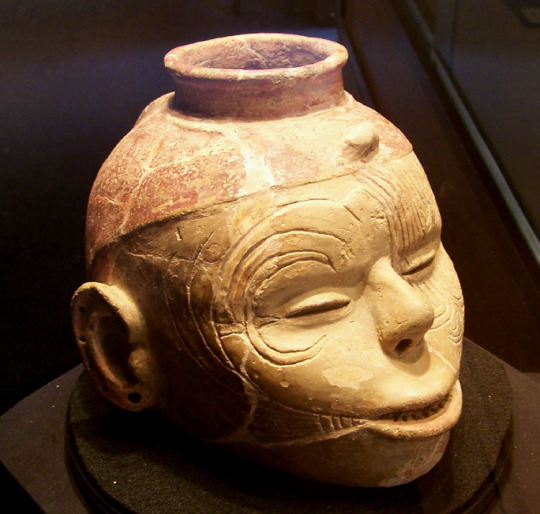
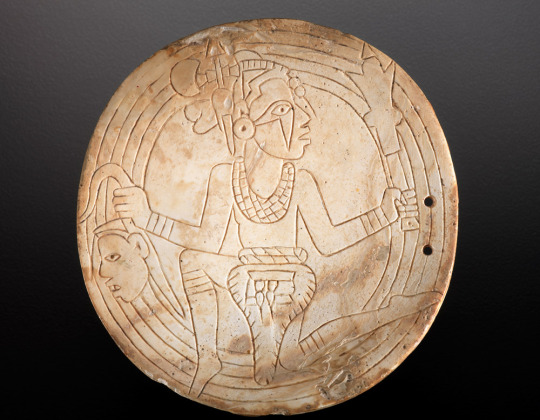
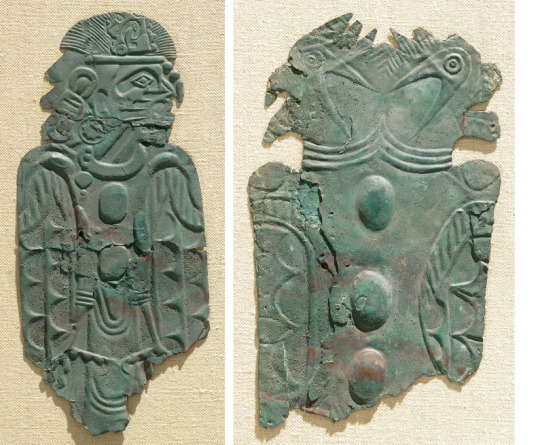
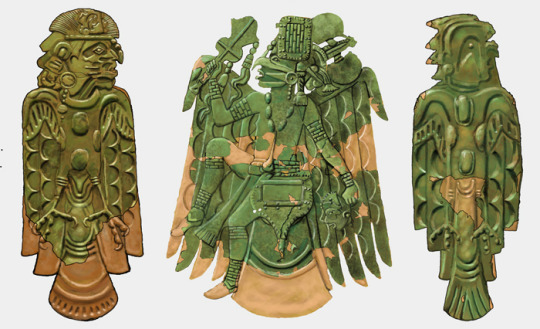
They had trade routes all over North America. For example copper from the Great Lakes region, shells from the Atlantic and Gulf Coast, and Obsidian from Mexico. In addition their own goods have been found exported to archaeological sites all over North America.
Then around the 14th century the Little Ice Age started, which was basically a sudden drop in global temperatures lasting until the mid 19th century, which resulted in crop failures and famine worldwide. In addition large populations were already stretching the food resources and agriculture of the area. This resulted in the decline of urban culture among the Mississippians. At the time in Eurasia the same was happening, which helped bring about the Black Death. So there were hard times all around. The 14th century was a bad time to be alive almost everywhere. Final collapse occurred in the 16th century when smallpox swept through the Americas after European contact.
Unfortunately for us they had no system of writing, at least none that can be found. So we will probably never know their story and history as well as say the ancient Romans. All that we know is pieced together through archaeological findings and oral history of their modern descendants.
Anyway I'm gonna find some good audiobooks to listen to on the subject while I do my weightlifting.
#information for the public about the Nation of people who are indigenous to the American continent. Many people are unaware that this Nation#highly spiritual nation of aboriginal#indigenous Americans who were originally called Washitaw Mu’urs (or Ouachita as it was amended by others throughout our history). We accept#as this is the heart of God and of our current Empress#Her Highness#Verdiacee “Tiari” Washitaw-Tunica (Turner) Goston El Bey. Her Highness Previous Spiritual Advisor of Spiritual Education and Information of#Oukhara Zeshera#states No Longer Advisor)#“All of us within our nation are creations of the Divine Creator#Imperial Royal Court French & Spanish “The Washitaw de Dugdahmoundyah was recorded as The Oldest Indigenous People on Earth in the final li#The Washitaw Indigenous Nation of Mound Builders received its United Nations number: 215/93. To date#the Empress#as one of the living heirs of Henry Turner#has recovered the title to 68#883 acres of land comprising most of the northern part of the ‘said state of Louisiana. The Washitaw never drew boundaries#We are the original inhabitants of all the lands from wherever you find mound sites you find part of the Empire in so called north America#to A-meri-ca.#including East and west Floridaes: and the Pecos River#encompasses the domain of the Empire Washitaw de Dugdahmoundyah. A land mass over 30 million acres. This is one of the regions that the Uni#Washitaw Dugdumoundya
361 notes
·
View notes
Text

BLOODHOUNDS
ft Y.T and Tripwire
[their ‘duo name’ is Bloodhounds from now on btw… if you even care..]
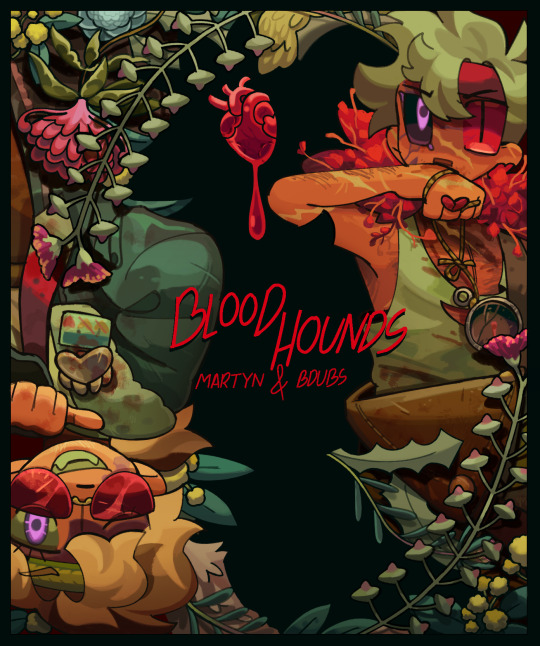
alternative title ver- it would’ve taken away the effect of the *COUGH* easter egg
notes n what not coming soon
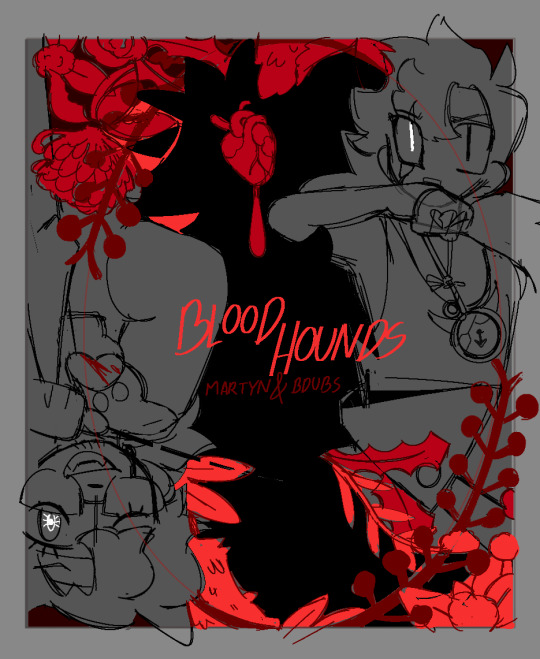

The sketch and the flowers used :3
The composition originally was going to be a lot different (had two in mind) where the Red King’s involvement would’ve been more prominent. Went with this one simply cuz it was just more fun to experiment, where the negative space is made front and centre focus :]
Whennnn picking out the plants ddint think for a second about symbolism- and going off of just ANY flower for flower language would have been too big of a selection pool… So in respects to SL environmental setting - native Australian plants it was.
-The golden wattle trees by its abundance and have benefited Aboriginal and Torres Straight Islanders for thousands of years to create various markers and tools. The plant survives harsh droughts, and its seeds have a coating strong enough that can be salvageable beyond bushfires.
-as a signifier of Spring and new beginnings hence rebirth, the golden wattle to me was also very thematically fitting for a season like Secret Life :]
-I never looked into what Illawarra flame trees (the flowers of the coat my SL!Bdubs design is wearing) before until today.. and I quote “Regains confidence and self-approval, able to make commitments with the strength of self-reliance. Clarity in life and ability to adapt to all situations. Secure enough to express and communicate true feelings. To be beautiful and strong ” [SOURCE: Australian Bushflowers] which…. Ok damn. There’s also alcohol in it.
-Eucalyptus trees in Indigenous Australian culture represent the division between the underworld, the Earth and heaven.
The selection of plants while don’t represent Bloodhounds together - but more of what Martyn and Bdubs are individually, they’re interesting in the things they have in common what they represent. And the differences they go about this loyalty throughout the seasons and why they devote - especially in LimL and SL.. Fascinating stuff.
#stufffsart#secret life spoilers#inthelittlewood#itlw#itlwart#bdoubleo100#bdoubleo#Bdubs#secret life#secret life smp#life series smp#trafficblr#mcytblr#i forgot… martyn doesn’t wear glasses.. I’m dorry#stufff rambles#(for the word dump below)#apologies if I get certain things wrong >< flower language isn’t my expertise
2K notes
·
View notes
Text
Archive Quarterly ~ journal of the west wasn't won archive project. Spring 2025 edition
#aboriginal rights#aboriginal title#Arthur Calder#BCANSI#Bill C-31#Buffalo Jump of the 1980s#Comprehensive Claims Policy#Delgamuukw trial#First Ministers Conference 1985#Gitxsan Wet&039;suwet&039;en#Indigenous Peoples#James Gosnell#Land claims#Methodist Missions North Pacific#Nielsen Report#Nisga&039;a#Non-Status Indian reinstatement#Papers relating to the Northwest Coast Commission 1888#Rejection of Funds
1 note
·
View note
Text
The problem isn't "funding indigenous and marginalized artists" it's "funding indigenous and other marginalized artists to make self-pitying PR for Canada to show how sorry and sensitive and prog they are now about the issues while not doing anything to actually solve the issues and usually actually making them worse"
One of the cringiest flavors of Canada's faux-progressive hasbara bullshit is the sheer amount of publically-funded art and media "acknowledging" " "bringing awareness to" "holding space for" etc. some shitty thing that happened in Canada or is happening right now instead of, you know, actually trying to fix those things. Oh the NFB funded another documentary about indigenous land rights while the government is trying to get rid of them? Canada helped fund an art installation about how unaffordable housing in Vancouver is instead of doing literally anything to actual fix that problem? How fucking helpful
#i've posted about this previously but canada is literally trying to do everything it can to extinguish aboriginal land title rn#while funding documentaries and art exhibits about how colonization *was* bad (thank god it's over now tho 🙏)#it's literally propaganda designed to discourage and erase indigenous and other forms of resistance happening rn
759 notes
·
View notes
Text

Standley Chasm, Australia: Standley Chasm is a geological formation located west of Alice Springs in the Northern Territory. It lies within the West MacDonnell National Park. The Western Arrernte Aboriginal people are its original occupiers. It is traditionally known as Angkerle Atwatye, meaning the Gap of Water. Standley Chasm is located in a reserve privately owned by the Iwupataka Land Trust. The first European name for the formation was Gall Springs after the third manager of Owen Springs Station which once held the title over this land. When used for pastoral purposes the chasm was a major watering site for cattle. Wikipedia
#Standley Chasm#Red Centre#Alice Springs#West MacDonnell National Park#Standley Chasm Angkerle#Northern Territory#oceania#australia#oceania continent
140 notes
·
View notes
Text


Liquor Prohibition Ordinance 1900, Ordert No. 3 , An Ordinance to prohibit the supply of Intoxicating Liquors to Natives.
Record Group 284: Records of the Government of American SamoaSeries: Laws and CodesFile Unit: "Laws and Regulations, 1900; 1901"
UNITED STATES NAVAL STATION, TUTUILA.
LIQUOR PROHIBITION ORDINACE 1900.
COMMANDER B.F. TILLEY, U.S.N., COMMANDANT.
No 3. PAGOPAGO. April 28th, 1900.
An Ordinance to prohibit the supply of Intoxication Liquors to Natives.
SHORT TITLE.
1.--The Short title of this Ordinance may be "The Liquor Prohibition Ordinance, 1900."
INTERPRETATION.
2.--n this ordinance the term "natives" shall in its reference mean not merely abori-
ginal natives of Samoa but aboriginal natives of India or of Fiji or of German-Samoa or of
any island in the Pacific Ocean, or any person born of a foreign father with a Samoan
mother and who cannot by law be recognised as being a subject or citizen of
the country to which his father is a subject or citizen, and the term "liquor"
shall mean any wine or other spirituous or fermented liquor or any liquid used for
drinking any portion of which is spirituous or fermented.
3.--No spirituous vinous or fermented liquors or intoxicating liquor or drink whatever
shall be sold, furnished to or procured for any native by any person except as hereunder
provided.
4.-If any person except as hereunder provided shall sell, supply to, or procure for any
native any liquor or drink as aforesaid or shall aid or abet in any way in the giving, selling,
supply or procuring any liquor in any form or quantity to or for any native shall be deemed to
be guilty of an offence against this Ordinance and on conviction thereof in a summary manner
shall be liable in addition to any penalty which may be incurred for the sale of such liquor
without a license to a fine not exceeding $100.0, or in default of payment, to imprisonment
for a term not exceeding 100 days.
5.--It shall not be lawful for any native to possess or have in his possession any liquor,
or to drink any liquor, and any native so doing shall on conviction be fined in a sum not
exceeding $25.00, in default of payment, be imprisoned for a term not exceeding 25 days.
EXEMPTIONS.
6.--Nothing in this Ordinance shall be held to apply
(a). To a minister of religion giving wine in conformity with any religious rite.
(b). To any person not being a publican, and not being within a public house, 2.
who shall give to any native for any urgent cause or necessity, and without
recompense or remuneration, any liquor, when such liquor is given solely
and purely for medical purposes; but it shall rest with the person giving
such liquor to prove satisfactory the existence of such urgent necessity and,
failing such proof, such person shall be liable to the punishment provided
for in paragraph 4 of this Ordinance.
(c). To the domestic servant or other messenger of any foreign resident who
shall bear a written and dated order for liquor from his employer for his em-
ployer's use. The term "Foreign Resident" in this Ordinance includes
and applies to every foreigner visiting, sojourning, or having a fixed place of
abode withing the limits of the United States Naval Station, Tutuila.
7. Any order under subsection "c" of the preceding section shall be signed by the,
employer, who shall also enter upon it the date of the day of his delivering it to his servant
and the order shall have no effect beyond the day of its date. Any person supplying liquor
upon such an order shall initial his name, and retain it in his possession for 12 calendar months.
8.--Any person shall be guilty of an offence against this ordinance and shall on convic-
tion thereof in a summary manner, be liable to the penalty provided in section 4 of this
Ordinance who for the purpose of evading the provisions hereof shall give liquor or allow his
name to be used for the purpose of procuring liquor for a native under color of any other
exemptions contained in this Ordinance.
9.--Storekeepers and publicans shall keep the liquor on their premises in such a manner
as to prevent easy access thereto by natives, and in default thereof shall be guilty of an offence
against this Ordinance and on conviction thereof in a summary manner to be liable to a penalty
of a fine not exceeding $25.00 or in default in payment thereof to imprisonment for a term
not exceeding 14 days.
10.--When any shall be charged with an offence under this ordinance, and said
offence shall have been prima facie established against him by the prosecutor he, unless he be
a medical practitioner, shall be hound to prove that he is, and that the prosecutor shall not
be bound to prove that he is not, covered by any of the exceptions provided by this
Ordinance.
11.--Any charge laid in respect of any offence against this Ordinance shall be laid within
a period of six months from the commission of such offence.
12.--This Ordinance shall take effect from and after the date of its publication.
Published and Exhibited at the Public Office of the Commandant in Fagatogo on this
18th day of April in the year 1900.
B. F. TILLEY, U.S.N.
COMMANDANT UNITED STATES NAVAL STATION, TUTUILA
59 notes
·
View notes
Text
"In an open-air courtroom set up in a nature reserve in Western NSW, a four-nation clan has secured one of the largest native title claims in the region's history.
Far from the four walls and formalities of a federal courtroom, Justice Melissa Perry delivered her determination at Newey Reserve in Cobar on Wednesday, recognising the native title rights of the Ngemba, Ngiyampaa, Wangaaypuwan and Wayilwan peoples.
The decision marks the successful end of a 12-year legal battle that began in 2012.
The claim covers more than 95,000 square kilometres of land and water from the Barwon River in the north, to the Lachlan River in the south, the Castlereagh River in the east and Ivanhoe to the west.
It recognises native title rights including the right to hunt, fish and gather resources, the right to access and camp on land and right to protect places of cultural and spiritual importance.
A legacy for future custodians
Aunty Elaine Ohlsen, a Ngiyampaa Elder from Cobar and one of the original applicants, said the decision brought her "mixed emotions".
"I just persevered," she said.
"We've been through a lot of trials and tribulations to get here, but I'm someone who won't give up fighting for our people."
"These sorts of things need to happen all the time, because we need to know who we are and where we come from and where we are in this country."
Aunty Elaine hopes the determination will inspire future generations to continue their ancestors' legacy.
"Hopefully, this will encourage them to stay connected to their country, heritage, and culture, and to carry on the hard work we've done," she said.
Vision for the future
Wangaaypuwan man and claim applicant John Shipp recently camped on country with four generations of his family.
He said the recognition of native title meant they could continue to do so without fear of being moved on.
"It's just those little things that give us our connection back to our land, our heritage, our culture," he said.
The native title holders have now formed the Ngemba, Ngiyampaa, Wangaaypuwan Wayilwan Aboriginal Corporation (NNWW Corporation) to manage their rights.
As a director of the NNWW Corporation, Mr Shipp sees the determination as the beginning of a new chapter...
As for Mr Shipp's message to other Indigenous groups fighting for recognition?
"Keep going — it's getting better, it's getting shorter, it's happening, just keep going," he said."
-via ABC News Australia, August 14, 2024
#indigenous#indigineous people#australia#new south wales#land back#indigenous rights#decolonization#first nations#aboriginal#Ngemba#Ngiyampaa#Wangaaypuwan#Wayilwan#good news#hope
1K notes
·
View notes
Text
The B.C. government and the Council of the Haida Nation have signed an agreement officially recognizing Haida Gwaii's Aboriginal title, more than two decades after the nation launched a legal action seeking formal recognition.
The province announced last month that it had reached a proposed deal with the Haida, which Indigenous Relations and Reconciliation Minister Murray Rankin called a "foundational step in the reconciliation pathway of Haida Nation and B.C."
On April 6, the nation announced that more than 500 Haida citizens had voted 95 per cent in favour of approving the Gaayhllxid/Gíhlagalgang "Rising Tide" Haida Title Lands Agreement.
"This does not mean that the government is granting us anything. We have always held our inherent rights and title to our lands," Tamara Davidson, a Vancouver regional representative for the Council of the Haida Nation, told CBC News on Sunday.
"We were born knowing this is ours." [...]
Continue Reading.
Tagging: @newsfromstolenland, @vague-humanoid
#cdnpoli#Landback#Indigenous politics#Indigenous Sovereignty#First Nations#Haida Nation#Haida Gwaii#British Columbia
200 notes
·
View notes
Text
INDIGENE (adj.) “native, indigenous,” 1590s, from French indigène (16c.), from Latin indigena “sprung from the land,” as a noun, “a native,” literally “in-born” (see indigenous). As a noun, “one who or that which is native, an aborigine,” from 1660s.
AMER’ICAN, noun A native of America; originally applied to the aboriginals, or copper-colored races, found here by the Europeans; but now applied to the descendants of Europeans born in America. - Webster’s 1828 Dictionary
Etymology:
The term “Moor” was applied to dark skin, brown skin, and reddish brown skin people, who were not only indigenous to Europe, but to west and north Africans. Even Black Indians of the Western Hemisphere were also dubbed with this title.
NEGRO (n.) 1550s, “member of a black-skinned race of Africa,” from Spanish or Portuguese negro “black,” from Latin nigrum (nominative niger) “black, dark, sable, dusky” (applied to the night sky, a storm, the complexion), figuratively “gloomy, unlucky, bad, wicked,”
BLACK (Adj) was used of dark-skinned people in Old English. Of coffee with nothing added, attested by 1796. The meaning “fierce, terrible, wicked” is from late 14c. The figurative senses often come from the notion of “without light,” moral or spiritual. Latin niger had many of the same figurative senses (“gloomy; unlucky; bad, wicked, malicious”)
Meaning “African-American vernacular, the English language as spoken by U.S. blacks” is from 1704. French nègre is a 16c. borrowing from Spanish negro. Older English words were Moor and blackamoor.
NATIONALITY: (n.) 1690s, “separate existence as a nation, national unity and integrity,” from national + -ity (in some usages perhaps from French nationalité. As “fact of belonging to or being a citizen of a particular state,” from 1828, gradually shading into “race, ethnicity.”
42 notes
·
View notes
Text

Miss Fisher Snippets (248)
In S1E5 Raisins and Almonds, the painting for which Phryne won the bid at the auction was painted by an Australian artist named Margaret Preston (1875 – 1963). According to a fellow Miss Fisher fan’s research, the piece was her work from 1925, called Still Life.
If you recall, in this episode, Bert was angry at Cec and his fiancée Alice for contemplating a move to the countryside and becoming a farmer, so he asked a man named Joe McPherson to make an offer to buy Cec’s share of their cab business. It turns out that McPherson was actually her birth name (Margaret Rose McPherson); Preston was her married name. I like the little Easter egg for the audience.
Margaret Preston showed a very early interest in art and went to study at the National Gallery of Victoria Art School for five years in her teens. Her art didn’t gain prominence until 1920s (coinciding with what Phryne said about her being a talent to watch), famous for her bold and colorful paintings and woodblock prints. The National Gallery of Australia described them as “energetically decorative”. In an article titled “Celebrating 150 years of Margaret Preston: A bold legacy that still inspires” (April 14, 2025 on copyright.com.au), she was called “a trailblazer in modernist painting, a committed advocate for Aboriginal art and Australian identity, and a fearless innovator in style and form”. Trailblazer. Advocate. Fearless. The same words we often used to describe Phryne. No wonder she was drawn to Preston’s painting. They were kindred spirits.
(Posted 21-Jun-2025)
#miss fisher snippets#foxypedia#miss fisher#missfisher#mfmm#raisins and almonds#phrynefisher#margaret preston
12 notes
·
View notes
Text
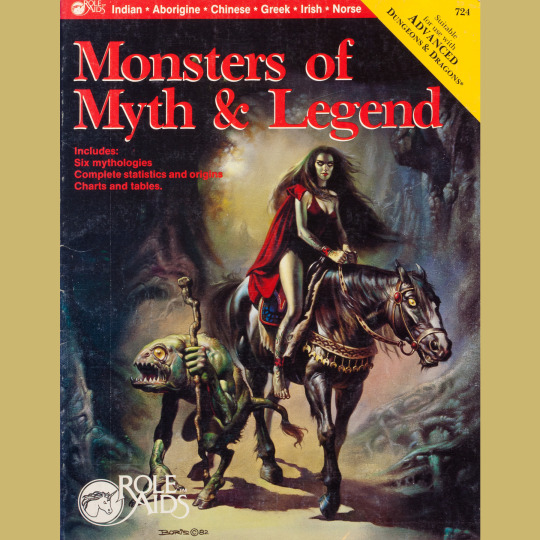
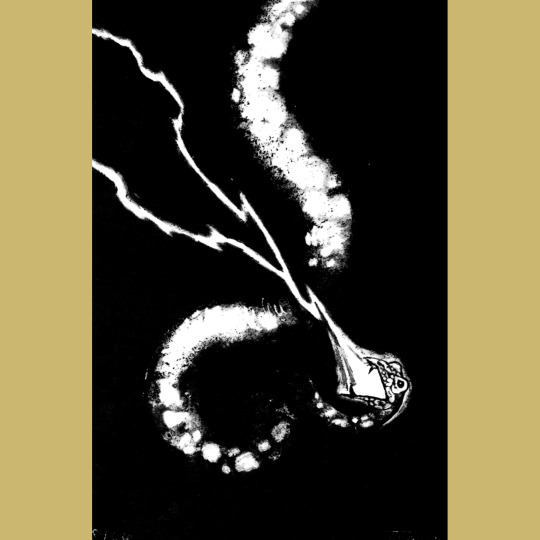
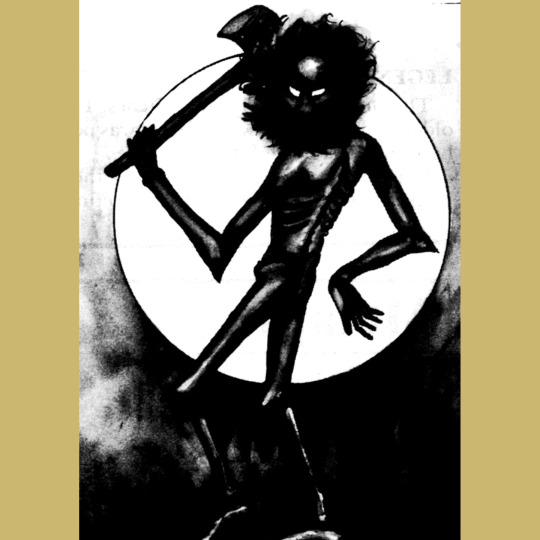
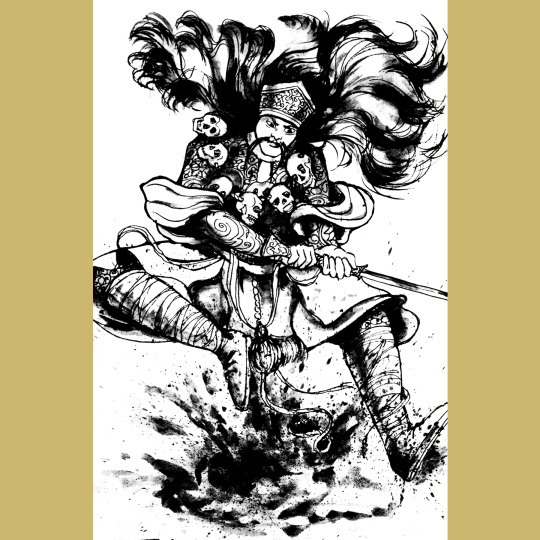
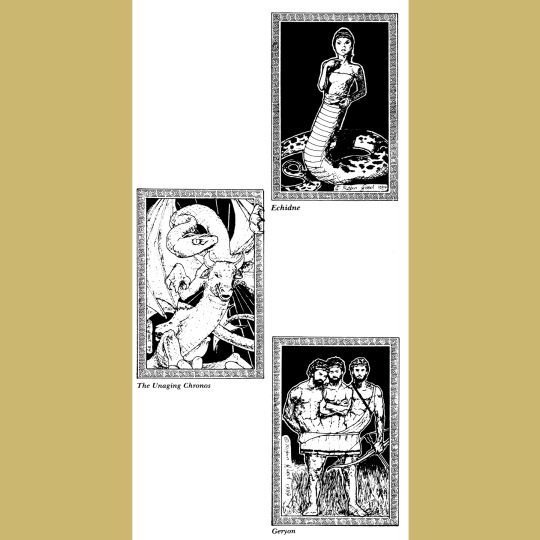
Love a monster book. This is Monsters of Myth & Legend (1984) for Mayfair’s Role Aids line of D&D sourcebooks. As the title tells you, this is a collection of monsters drawn from mythology. Four groupings of them are tied to specific cultures: Norse, Irish, Greek, Chinese. Two other draw broadly from the myths of people living in large regions but which belong to many distinct cultures: native American and Aboriginal Australians.
The mix is pretty solid. I particularly appreciate the monsters from Australia, which are often overlooked in this sort of thing — and even here, I can think of a couple more I would have liked to have seen, like the Pangkarlangu (neolithic cannibals), though it is nice to get attributes for Malingee (shadow spirits with burning eyes) and Murgah Muggulu (a kind of dream spider). Weird that there are still some deep cuts from Greece — maenads, mares of Thrace, even Scylla — who don’t have D&D attributes. The China chapter is probably the most robust, providing a variety of spirits and monsters that have multiple potential applications in the game. China also has a giant with no head, which is maybe the most delightful monster in the whole book.
This is maybe one of my favorite Boris Vallejo paintings that were recycled for Role Aids covers. It downplays physique and features a rad monster, both of which seem unusual for Boris. Its more atmospheric, too, a bit more in line with Frazetta, honestly. The interiors are by Teanna Byerts and Robin Wood. I don’t dislike them, but they do seem diminished by tight deadlines, if I had to guess.
#roleplaying game#tabletop rpg#dungeons & dragons#rpg#d&d#ttrpg#Mayfair#Role Aids#Monsters Of Myth And Legend
84 notes
·
View notes